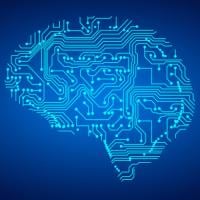How AI Is Transforming Software Testing

From mobile apps that command home appliances to virtual reality, the digital revolution is expanding to cover every aspect of the human experience. The majority of teams developing this technology are using the agile rapid delivery framework, which equates to roughly a new launch every two weeks. Of course, those apps and devices must be tested to ensure an optimal experience for the end-user before each launch, but at that pace, manual testing is simply inadequate.
The time needed to complete the slew of required test cases directly conflicts with the fast pace driven by agile-like frameworks and continuous development. The exploration of alternative and superior testing methods, such as automation and AI, is now a necessity in order to keep pace and equip QA and test teams with augmented efficiencies.
AI is showing great potential in identifying testing defects quickly and eliminating human intervention. Such advances have provided the capability to determine how a product will perform at both the machine level and the data-server level. And in the current era, where emphasis is on DevOps and continuous integration, delivery, and testing, AI can speed up these processes and make them more efficient.
Just like automation tools already have, AI is going to aid in the overall testing effort.
AI has a proven ability to function with more collective intelligence, speed, and scale than even the best-funded app teams of today. With continuous development setting an ever more aggressive pace, along with the combined pressure from AI-inspired automation, robots, and chatbots, it begs the question: Are testing and QA teams under siege? Are QA roles in jeopardy of being phased out or replaced, similar to the manufacturing industry?
Over the past decade, technologies have evolved drastically, but one aspect that remains constant is human testers’ interaction with them. The same holds true for AI. To train the AI, we need good input-output combinations, which we call training data sets. We need to choose a training data set carefully, as the AI starts learning from it and creating relationships based on what we give to it. It is also important to monitor how the AI is learning as we give it different training data sets because this is going to be vital to how the software is going to be tested. We would still need human involvement in this training.
It is important to ensure that the security, privacy, and ethical aspects of the AI software are not compromised. All these factors contribute to better testability of the software. We need humans for this, too.
We will continue to do exploratory testing manually, because there are some things still best left to human minds. But we increasingly will use AI to automate processes while we do this exploration. Just like automation tools, AI would not replace manual testing, but instead complement it.
With time, the maturity level of AI automation will significantly grow. Teams will start seeing benefits and will realize the need to shift their thinking in terms of how they view software systems and how they can be tested. The future looks bright for AI-based testing solutions.
Raj Subramanian is presenting the session How AI Is Transforming Software Testing at STARCANADA 2018, October 14–19 in Toronto, Ontario.


What tools are you currently using for AI automation?
Hi Raj,
Yes, we can definitely say so that AI is transforming the software testing scene. I completely agree with you on this, ‘AI is showing great potential in identifying testing defects quickly and eliminating human intervention. Such advances have provided the capability to determine how a product will perform at both the machine level and the data-server level.’ The application surface is getting complex each day and various applications interact with each other through APIs, which add up to the complexity. Apart from increasing the complexity, there is immense rush to bring the application to the market. With demanding market scenario, the releases that would happen over a month’s span are being done within a week’s time. This is putting tremendous load on testing.
Hence, Machine-based intelligence is needed to overcome the testing and QA challenges that testers would face on a regular and recurring basis. You might like to read further on these lines. Please do share your views as well - https://www.cigniti.com/blog/can-ai-power-up-your-app-testing-efforts/
AI is Already Changing Test Automation. Here are few examples of the automation testing scenarios that are already leveraging AI:
What would you recommend for AI Automation for BFSI?
Also, do share your views on How Banks Can Ensure Quality CRM Testing with an Automated Solution
To help you with extra agreement, envision a economic framework with an imperfection which makes Bank B no longer get the proper measure of money that is being moved from Bank A.
It can likewise be instances the place there are inaccurate trade fees utilized to the trade or the money is not modified over into the proper money. Despite what it is, the trouble is primary and can have been stayed away from by means of professional programming testing.
Programming checking out is widespread since, supposing that there are any bugs or errors in the product, they can be diagnosed early and constant earlier than the product object is conveyed. An as it should be tried programming object ensures steadfastness, security, and most desirable execution, which prompts time funding funds, value adequacy, and purchaser loyalty.
Basic Reasons Why Software Testing is Necessary